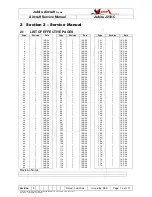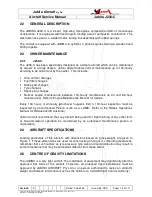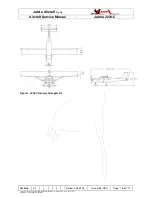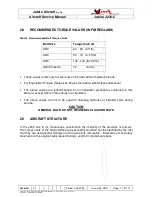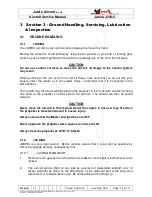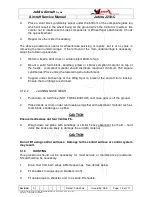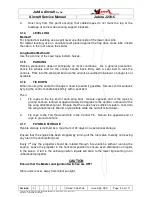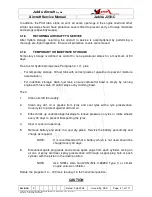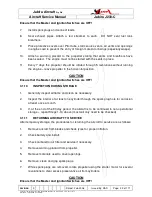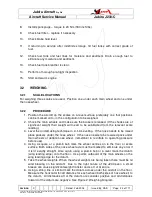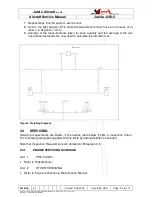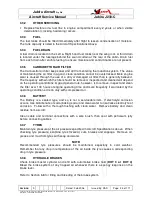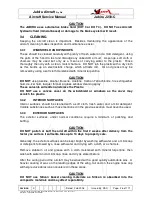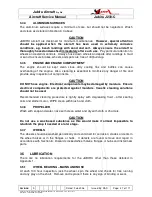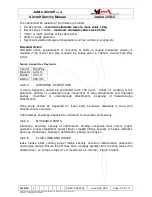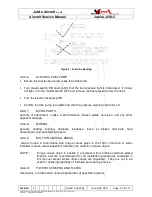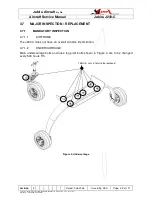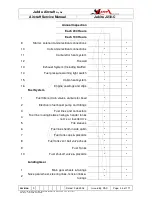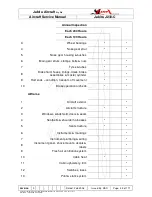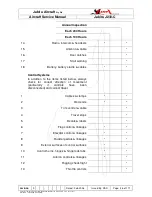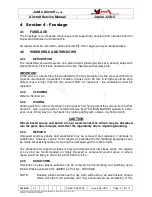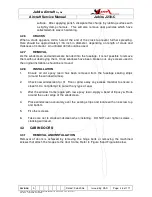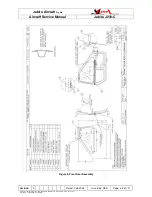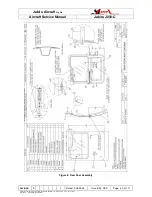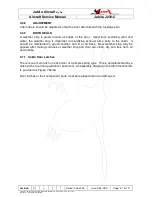
Jabiru Aircraft
Pty Ptd
Aircraft Service Manual
Jabiru J230-C
REVISION
0
Dated : Feb 2006
Issued By: RAS
Page: 26 of 171
L:\files\Technical_manuals\J230_J430\J230.J430_Work_files\J230-C_Tech_Rev_1.doc
Print Date: 14/01/2009 4:41:00 PM
CAUTION
The JABIRU uses automotive brake fluid (DOT 3 or DOT 4). DO NOT use Aircraft
hydraulic fluid (mineral based) or damage to the brake system will result.
3.4
CLEANING
Keeping the aircraft clean is important. Besides maintaining the appearance of the
aircraft, cleaning makes inspection and maintenance easier.
3.4.1
WINDSHIELD AND WINDOWS
These should be cleaned carefully with plenty of fresh water and a mild detergent, using
the palm of the hand to feel and dislodge any caked dirt or mud. A sponge, soft cloth or
chamois may be used but only as a means of carrying water to the plastic. Rinse
thoroughly then dry with a clean, moist chamois. DO NOT rub the plastic with a dry cloth
as this builds up an electrostatic charge, which attracts dirt. Oil and grease may be
removed by using a soft cloth moistened with mineral turpentine.
CAUTION
DO NOT
use gasoline, alcohol, Buzene, Acetone, Carbon Tetrachloride, fire extinguisher
fluid, de-icer fluid, lacquer thinner or glass window cleaning spray.
These solvents will soften and craze the Plastic.
DO NOT use a canvas cover on the windshield or windows as the cover may
scratch the plastic.
3.4.2
INTERIOR SURFACES
Interior surfaces should be cleaned with a soft cloth, fresh water and a mild detergent.
Volatile substances such as those mentioned in the previous section must never be used.
3.4.3
EXTERIOR SURFACES
The exterior surfaces, under normal conditions, require a minimum of polishing and
buffing.
CAUTION
DO NOT polish or buff the aircraft within the first 2 weeks after delivery from the
factory as surface treatments take up to 14 days to properly cure.
Generally, the exterior surfaces can be kept bright by washing with water and a mild soap
or detergent, followed by a rinse with water and drying with a cloth or a chamois.
Remove stubborn oil and grease with a cloth moistened with mineral turpentine, then
wash with water and a mild soap, rinse and dry as stated before.
After the curing period the aircraft may be waxed with a good quality automobile wax. A
heavier coating of wax on the leading edges of the wing, tail and on the engine nose cap
will help reduce abrasion encountered in these areas.
CAUTION
DO NOT use Silicon based cleaning materials as Silicon is absorbed into the
composite materials and may affect reparability.


